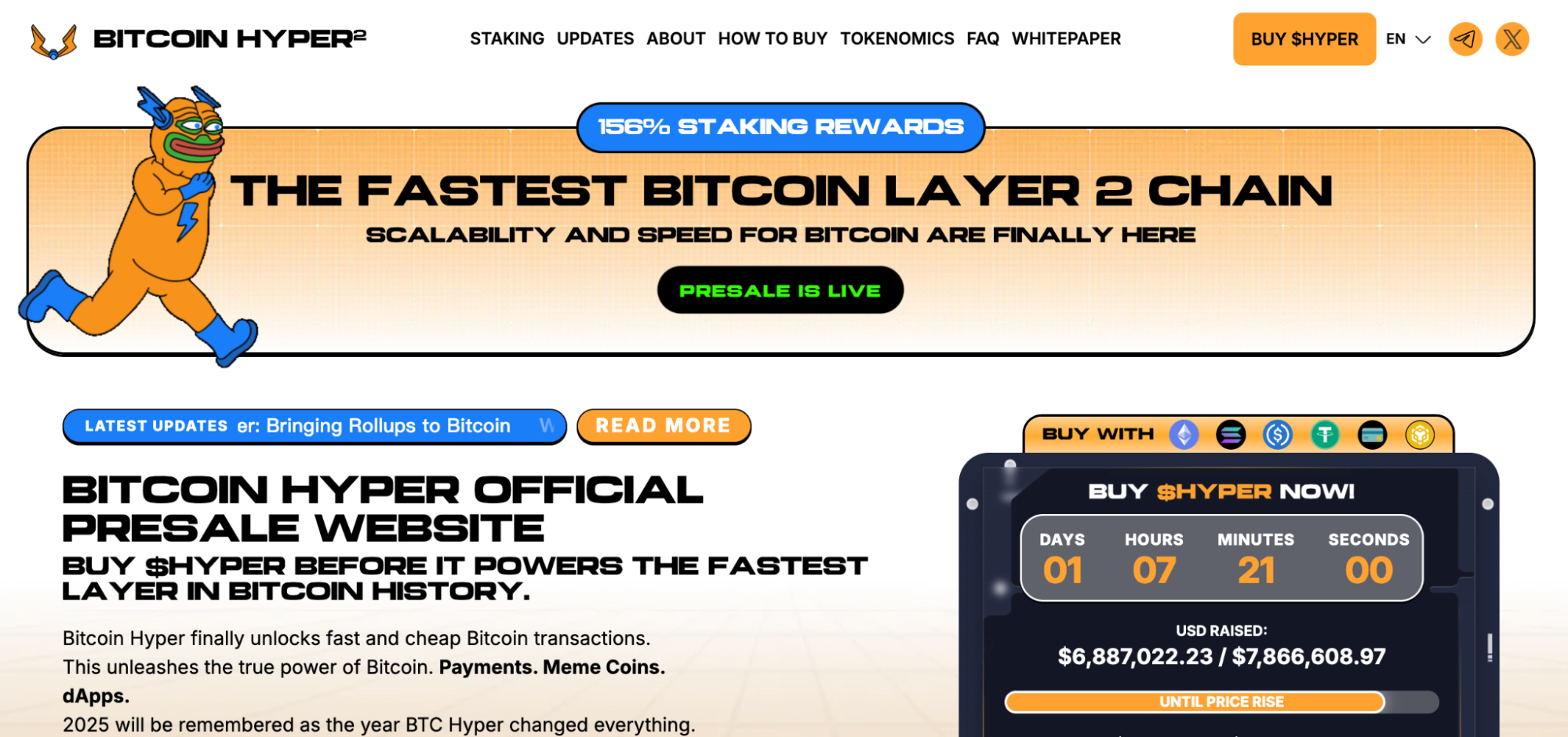What Is Bitcoin Hyper? Enabling Smart Contracts and High-Performance Layer 2 for Bitcoin

Image: https://bitcoinhyper.com/en#jp
In the crypto space, Bitcoin stands as the original blockchain project and is widely regarded as “digital gold” due to its decentralized and highly secure nature. Yet, as DeFi, NFTs, and Web3 have grown rapidly, Bitcoin has shown its limitations—specifically, slow transaction speeds, high fees, and the absence of smart contract capabilities. To address these challenges, Bitcoin Hyper was developed, aiming to create a “high-speed, low-cost, and programmable” Layer 2 network for Bitcoin.
What Is Bitcoin Hyper?
Bitcoin Hyper is a Layer 2 network purpose-built for Bitcoin. Instead of replacing Bitcoin, it uses off-chain scaling to increase the flexibility and efficiency of the Bitcoin ecosystem. The project incorporates the Solana Virtual Machine (SVM) and a decentralized bridging solution called Canonical Bridge, enabling users to map Bitcoin onto Layer 2 for fast interactions, then settle transactions back to the main chain.
What Problems Does It Solve for Bitcoin?
- Slow transaction speeds: The Bitcoin mainnet can process only about 7 transactions per second, severely limiting its scalability in payments and broader applications. Bitcoin Hyper’s Layer 2 enables near-instant transaction confirmations.
- High transaction fees: During network peaks, Bitcoin’s transaction fees become prohibitively expensive for most users. With Bitcoin Hyper, users pay fees using the $HYPER token, which dramatically lowers costs.
- Lack of smart contracts: Native Bitcoin does not support smart contracts, which puts it behind blockchains like Ethereum for DeFi and DApp development. By integrating SVM, Bitcoin Hyper brings a high-performance smart contract environment to Bitcoin Hyper.
Core Technologies: SVM and Canonical Bridge
- Solana Virtual Machine (SVM): Serving as Bitcoin Hyper’s execution engine, SVM delivers contract processing speeds even faster than native Solana. Developers can use Rust to build smart contracts. They can quickly deploy high-performance applications.
- Canonical Bridge: This crucial component connects the Bitcoin mainnet and Layer 2. Users can lock BTC via the bridge to receive equivalent tokens on Layer 2 (such as Wrapped BTC), enabling users to participate in DeFi or payments, and later seamlessly withdraw their assets back to the main chain with a single click.
$HYPER Token Model
$HYPER is the native token for the Bitcoin Hyper network with the following utilities:
- Paying gas for transactions and smart contract execution;
- Staking to earn APY;
- Accessing DApps or premium features;
- Receiving developer incentives and ecosystem funding.
The project will cap the total supply at 21 billion tokens and distribute all tokens through a public presale—without private allocations or reserves—to ensure transparency and fairness.
Project Roadmap and Outlook
Bitcoin Hyper will advance through these phases:
- Q2-Q3 2025: Website launch, whitepaper release, and public presale;
- Q3 2025: Mainnet launch and Canonical Bridge activation;
- Q4 2025: Ecosystem expansion to support DEX, NFT, and gaming applications;
- Q1 2026: Community DAO rollout, launching governance and node incentive mechanisms.
This roadmap positions Bitcoin Hyper as a flagship Bitcoin Layer 2 project, bringing new energy and innovation to the Bitcoin ecosystem.





